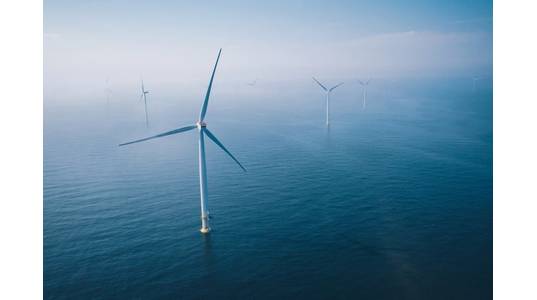
Japan's government on Tuesday approved a draft amendment to existing legislation to allow for the installation of offshore wind power in exclusive economic zones (EEZ), a milestone towards the country's goal of carbon neutrality by 2050.
Japan aims to have 10 gigawatts (GW) of offshore wind power projects by 2030 and up to 45 GW by 2040, to replace fossil fuels including coal and liquefied natural gas (LNG) in its energy mix, for which floating offshore wind is essential.
The new legislation would allow wind farms to be installed further out to sea from current territorial and internal waters, the government, including the ministry of economy, trade and industry (METI) and the ministry of land, infrastructure, transport and tourism, said in a statement.
"Through this bill, we will be able to create stable and large-scale projects in the sea area," Industry Minister Ken Saito told a briefing, adding that the new legislation should accelerate offshore wind expansion.
Global energy companies, from Germany's RWE RWEG.DE to Spain's Iberdrola IBE.MC, have been urging Japan to beef up auctions and make investments more attractive, amid soaring costs as competition for suppliers grows worldwide, and to enact law for the EEZ.
EEZs are non-territorial waters where maritime nations claim mineral exploration and fishing rights.
Unlike the auction system for territorial waters, the proposed EEZ scheme will adopt a two-step approval process.
The industry ministry will select the installation area, considering factors like wind conditions, water depth and proximity to territorial waters. Tentative approval will be initially provided to applicants.
Later, official approval will be granted after consultations with relevant parties, including fishermen and shippers, the government said.
The government aims to pass the amended legislation during this parliamentary session, scheduled to conclude in late June.
It could take about 10 years for the first case in the EEZ to become operational, Masaki Higurashi, a director in the industry ministry, told reporters, adding an installation area could support a generation capacity of several gigawatts.
Japan currently has less than 0.5 GW of offshore wind power installed and is developing a few floating offshore wind farms, mainly for demonstration purposes.
Industry players are closely watching the EEZ legislation, which is key to unlocking floating offshore wind development and allowing for it to be part of the state process.
All three major rounds of Japan's state auctions so far have involved turbines which will be fixed to the ocean floor.
(Reuters - Reporting by Katya Golubkova and Yuka Obayashi; Editing by Stephen Coates and Alexander Smith)


